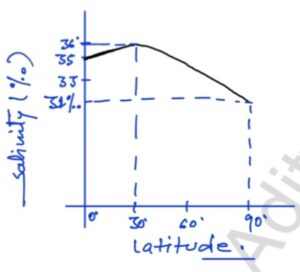Give a description of the several types of deserts that can be found worldwide, along with an explanation of how they arise. (Answer in 250 words)
The formation of the Andes and Himalayas can be explained by the theory of plate tectonics through the interaction of different types of plate boundaries. Andes Formation: Subduction Zone: The oceanic Nazca Plate subducts beneath the continental South American Plate. Convergent Boundary: This oceaniRead more
The formation of the Andes and Himalayas can be explained by the theory of plate tectonics through the interaction of different types of plate boundaries.
Andes Formation:
- Subduction Zone: The oceanic Nazca Plate subducts beneath the continental South American Plate.
- Convergent Boundary: This oceanic-continental interaction creates a convergent boundary.
- Volcanic Activity: Subduction leads to melting of the oceanic plate, resulting in volcanic activity.
- Uplift and Folding: The overriding continental plate is uplifted and folded, forming the Andes.
Himalayas Formation:
- Continental Collision: The Indian Plate collides with the Eurasian Plate.
- Convergent Boundary: This interaction is between two continental plates.
- No Subduction: Neither plate subducts due to their buoyant continental crusts.
- Crustal Thickening: The collision causes thickening and folding of the crust.
- Uplift: The crustal material is pushed upwards, creating the Himalayas.
Thus, while both mountain ranges arise from convergent plate boundaries, the Andes involve oceanic-continental subduction, and the Himalayas result from continental-continental collision, leading to differences in their geological characteristics and formation processes.
See less




A desert is an extremely dry area of land with extreme environments and sparse vegetation. They are likely to develop in areas where annual precipitation is less than 250 mm. It is one of Earth's major types of ecosystems, supporting a community of distinctive flora and fauna specially adapted to thRead more
A desert is an extremely dry area of land with extreme environments and sparse vegetation. They are likely to develop in areas where annual precipitation is less than 250 mm. It is one of Earth’s major types of ecosystems, supporting a community of distinctive flora and fauna specially adapted to the harsh environment. Geologists group deserts into five categories:
Geologists group deserts into five categories:
Deserts are found on every continent and cover about one-fifth of Earth’s land area. They are home to around 1 billion people-one-sixth of the Earth’s population. It has been observed that in semi-arid areas that border deserts, climate change and human activities have led to increased desertification.
See less